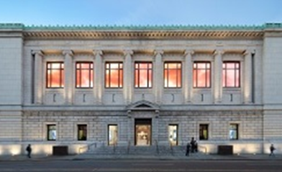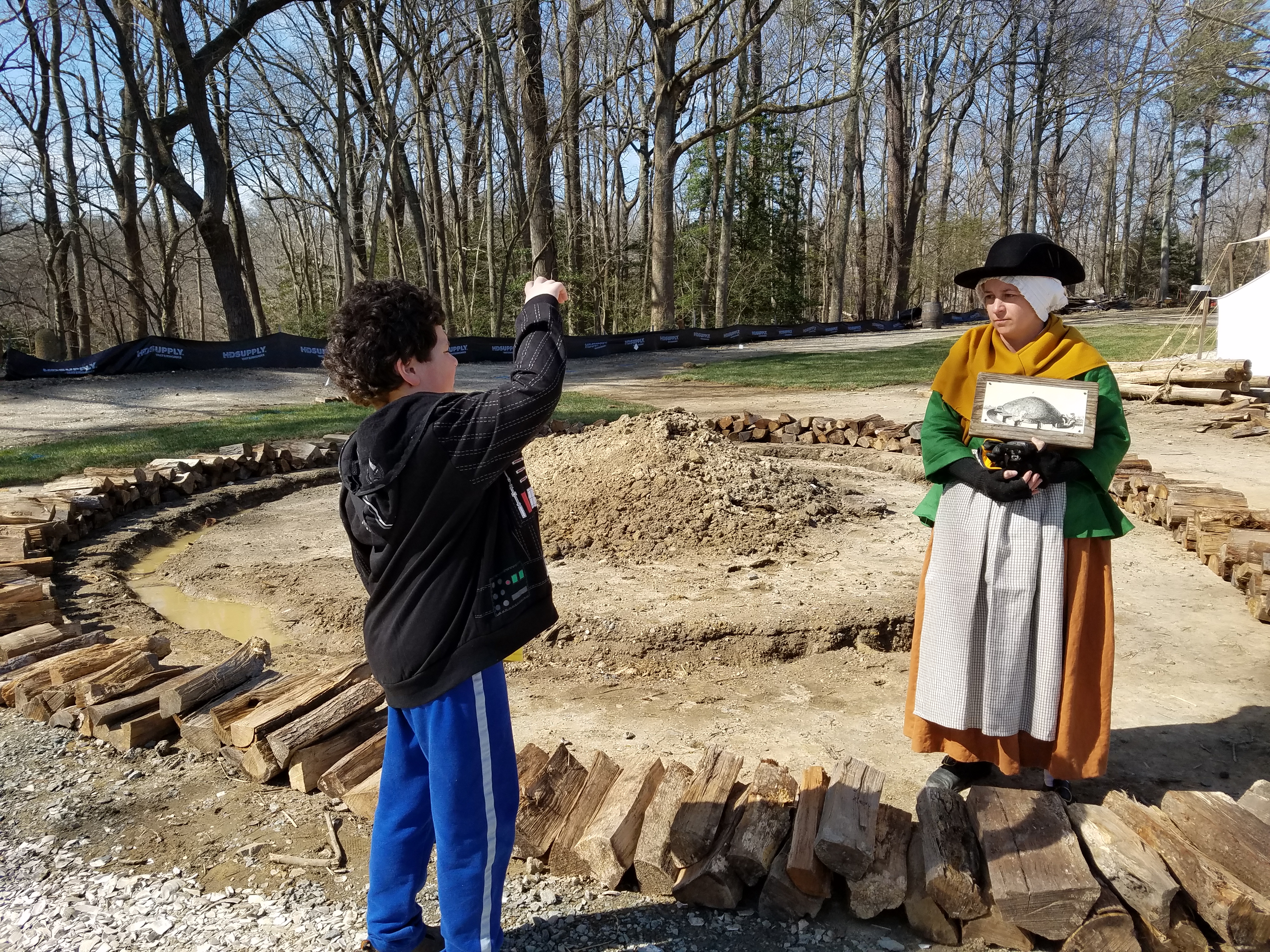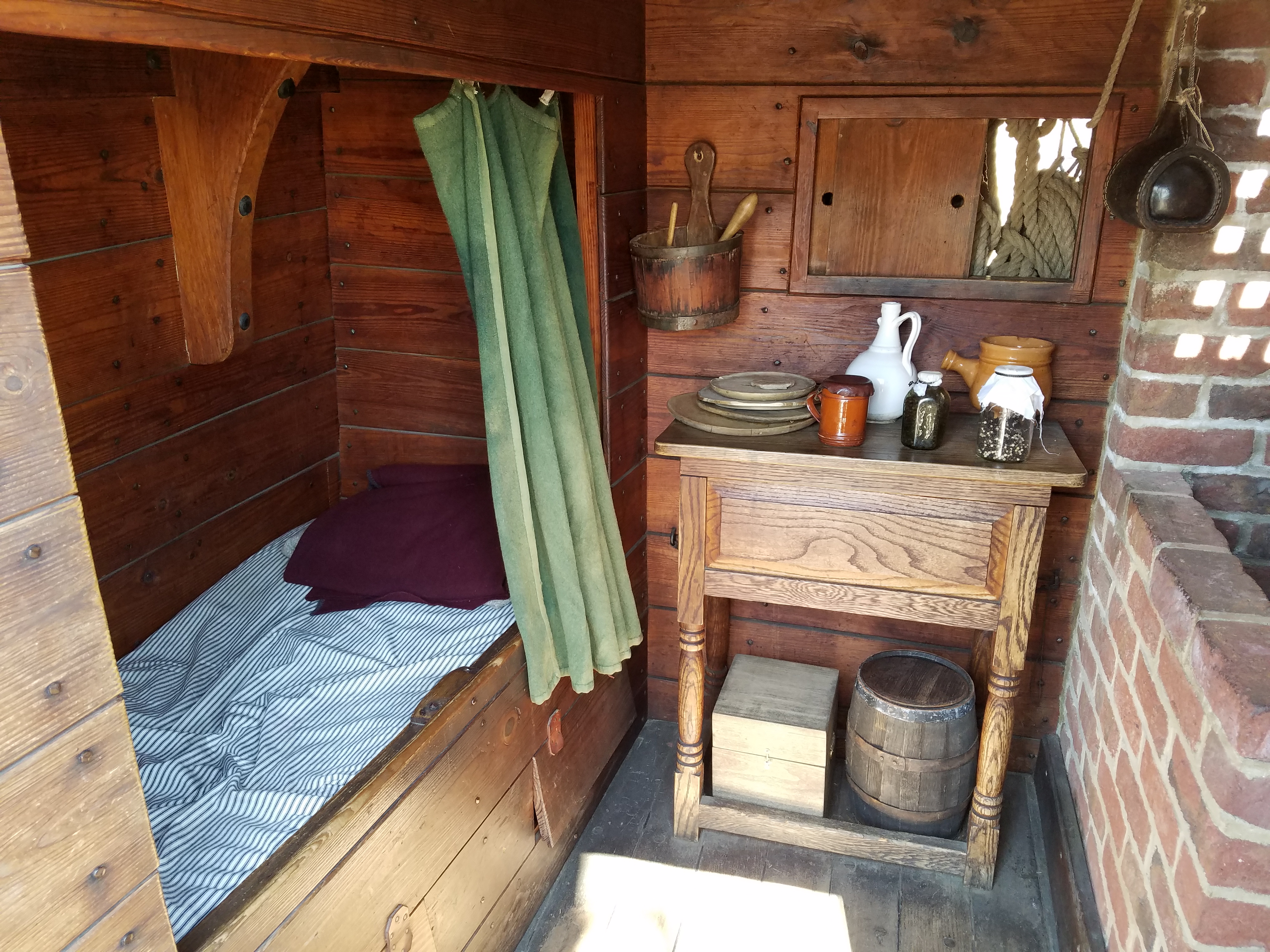
Current and upcoming exhibitions
Remote, history-based family programs for all ages
EXHIBITIONS AND SPECIAL INSTALLATIONS
The Waldorf Astoria Lobby Clock
Ongoing
Meet us at the clock! The great Waldorf Astoria clock is a legendary part of New York City lore and a meeting spot for generations of New Yorkers. Originally made for the 1893 World’s Columbian Exposition in Chicago, it was crafted in London and features relief portraits of American presidents and Queen Victoria of England. For decades, the towering clock graced the Waldorf Astoria—both at its first location on Fifth Avenue and 34th Street and in the lobby of the hotel’s longtime address at Park Avenue and 50th Street. This time-keeping treasure recently underwent a meticulous restoration and is on view in the Smith Gallery during the hotel’s renovation.
4 Artworks from the Elie and Sarah Hirschfeld Collection, Scenes of New York City
Now through August 1, 2021
Discover four paintings from the Elie and Sarah Hirschfeld Collection, Scenes of New York City—the first donated works by acclaimed American artists William Merritt Chase, William James Glackens, George Luks, and John Henry Twachtman—in this special installation ahead of the full collection going on view later this year.
Holiday Express: Toys and Trains from the Jerni Collection
LAST CHANCE: Now through April 11, 2021
Featuring toy trains, figurines, and miniature models from the renowned Jerni Collection, the exhibition transports young and old alike to a bygone era. The display includes a variety of toy train stations dating from the turn of the 19th century to the WWII era, showcasing the evolving designs of American and European toymakers. Visitors are greeted by animations and fun facts about the toys on nearby screens, and kids will be delighted by a specially created bench inspired by a sleigh in New-York Historical’s collection. And explore the Jerni Collection online with Google Arts & Culture.
The Art of Architecture: Beaux-Arts Drawings from the Peter May Collection
COMING SOON: April 9, 2021 – June 13, 2021
This special installation of more than 50 drawings represents the work of architecture students and the practice of Parisian architecture in the 19th and early 20th centuries. Works featured in the Salon-style installation include designs for monuments, universities, train stations, casinos, and country homes executed for student assignments, juried competitions, and public presentations. The renderings reflect the classical architectural style popularly known as Beaux Arts and practiced by European and American architects until WWII. Two examples of the Beaux-Arts tradition from the eminent New York-based architectural firm McKim, Mead & White—whose records are archived at New-York Historical—are also on display.
COMING SOON: April 23 – August 15, 2021
In Bruce McCall’s New York pterodactyls fly down Central Park West, rooftop farms reach far up into the sky, and ubiquitous orange parking tickets are part of the fall foliage spectacle. Featuring more than 40 of the artist’s zany, topical paintings, this colorful exhibition transports visitors to an often retro-futuristic New York, inviting them to ponder what the city is or could be. Canadian-born author and artist Bruce McCall, who moved to New York City in 1964, has contributed to virtually every prominent magazine in North America, including Esquire and Vanity Fair, and was a member of the original National Lampoon. For over four decades, McCall’s work has appeared regularly in the New Yorker, for which he has created more than 75 covers.
Safe/Haven: Gay Life in 1950s Cherry Grove
COMING SOON: May 14 – October 11, 2021
During weekends and summers in the pre-Stonewall era, gay men and women, including many New Yorkers, traveled to the secluded beach town of Cherry Grove on Fire Island where they found opportunities for self-expression—behavior that was both stigmatized and criminalized in the straight world. These visitors took pleasure in the costumed parties, theatrical events, and liberated atmosphere that this sanctuary provided. On view outdoors in New-York Historical’s rear courtyard, this exhibition explores the gay and lesbian community that flourished during the 1950s in Cherry Grove through some 70 enlarged photographs and additional ephemera from the unique holdings of the Cherry Grove Archives Collection.
Cover Story: Katharine Graham, CEO
COMING SOON: May 21 – October 3, 2021
Native New Yorker Katharine Meyer Graham (1917-2001) never expected to become the president, publisher, and CEO of the Washington Post, but she thrived in that position—and even helped end a war and a corrupt U.S. presidency by revealing the Pentagon Papers and Watergate to an outraged public. On display in the Joyce B. Cowin Women’s History Gallery, this exhibition examines a transformative period in Graham’s life, as her devotion to the Post helped her grow from a self-effacing widow into an authoritative, decisive media executive. It was this new Katharine Graham whom Truman Capote honored with a spectacular Black and White masquerade ball at the Plaza Hotel in 1966. Graham’s evening gown and mask, Capote’s tuxedo, and designer gowns worn by famous guests bring the “Party of the Century” to life and illustrate how Graham’s contact with new networks of power and celebrity helped consolidate her influence in journalism.
Dreaming Together: New-York Historical Society and Asia Society Museum
Now through July 25, 2021
Dreaming Together, a collaboration between the New-York Historical Society and Asia Society Museum, features more than 35 interwoven works drawn from both art collections that generate dialogue about the urban and natural environments, protest and rebellion, individuals and identities, borders and crossings. Highlights include the Canal Street diptych (1992) from Martin Wong’s Chinatown series, 98-foot hanging scrolls by Dinh Q. Lê featuring abstractions of the World Trade Center towers (2016), and a dystopic video narrative of war and destruction by Shiva Ahmadi (2014). The result is a powerful reflection on the possibilities unleashed when people, cultures, and institutions dream in tandem. Artist Tim Okamura’s 2021 painting Nurse Tracey, depicting a healthcare worker striking the familiar pose from the WWII poster, We Can Do It!, can be seen as part of the latest rotation of works in the exhibition, along with other new works.
So Ready for Laughter: Bob Hope and World War II
Now on view through September 5, 2021
Organized by the National WWII Museum in New Orleans, this special exhibition highlights the legendary performer Bob Hope and his unique role during World War II entertaining troops overseas. Coinciding with the 80th anniversary of the founding of the United Service Organizations (USO), the exhibition features artifacts, films, and rare photographs to illustrate how Hope helped lift spirits both abroad and on the home front with his USO and radio shows during a dark time in American history. So Ready for Laughter explores Hope’s major USO tours and travels during World War II through some 50 artifacts, including rare and unpublished photographs of Hope and a World War II-era aircraft fragment. Throughout April, Little New-Yorkers will feature silly stories in honor of Hope.
on view through September 5, 2021
A companion exhibition to So Ready for Laughter: Bob Hope and World War II, The Gift of Laughter blends fact and works of fiction to illustrate Bob Hope’s wide-ranging career as USO entertainer, television star, and Academy Award host and the many roles comedians fill. Objects on view include an honorary Oscar presented to Hope for “his contribution to the laughter of the world,” mementos from his later USO tours, and awards and memorabilia including a Friars Club Trophy. Also on display are costumes by Emmy Award-winning costume designer Donna Zakowska from the popular Amazon Prime Video series The Marvelous Mrs. Maisel.
Meet the Presidents and the Oval Office
Ongoing
Discover how the role of the president has evolved since George Washington. Visitors walk in the footsteps of presidents and into a recreation of the Oval Office—complete with audio excerpts of John F. Kennedy, Lyndon Johnson, and Richard Nixon and a Resolute Desk replica. Complementing the Oval Office, the Meet the Presidents Gallery features historical footage, artworks, and unique artifacts like the George Washington inaugural bible that further illustrate the powers and responsibilities of the executive branch. (Please note the Oval Office installation is closed for the month of April.)
New-York Historical’s Fourth Floor
Ongoing
Experience the past on our fourth floor! Explore historic treasures from our permanent collection—including toys from childhoods of the past—be dazzled by 100 glowing lamps in our Gallery of Tiffany Lamps, and uncover the untold stories of women in American history through our Center for Women’s History.
Please note that while New-York Historical is open with timed-entry tickets and safety protocols in place, the DiMenna Children’s History Museum remains temporarily closed. When visiting the Museum, families can explore the installations on view with an array of digital family guides.





















